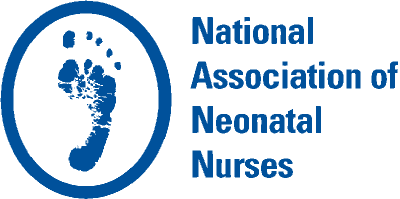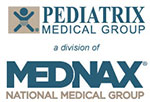Feature
Co-Nursing in Same-Sex Couples
Christina Choyce, MSN RNC-NIC CBC
A note about language: The term "same-sex couple" rather than "lesbian couple" is used in this article to be more inclusive. Same-sex couples are diverse in a variety of ways—a woman may identify as such regardless of biological sex. This article will refer to the "parent” rather than the "mother'" to be inclusive of various gender identities. Both parents will be referred to as ”they” and “them.”
Lesbian, gay, bisexual, transgender, and queer (LGBTQ) relationships present unique variables that health practitioners encounter in their daily practice. The United States’ 2020 Healthy People objectives call for LGBTQ parenting issues to be evaluated and addressed in the 2010–2020 decade. As a result, improving access and addressing barriers to breastfeeding support—along with studying LGBTQ breastfeeding rates—should be considered priorities within the field of lactation (Healthy People, 2020). This article provides an overview of co-nursing when both parents have the ability and desire to breastfeed their infant and recommends methods for inducing breastfeeding for adoptive or surrogate parents.
Family structures are diversifying in the United States and more same‐sex couples are building families. Social acceptance of individuals identifying as LGBTQ has led to the recognition of a new population of parents. The 2017 American Community Survey from the United States Census Bureau estimated a total number of 935,229 same-sex coupled households in the United States (United States Census, 2017). Of this estimate, 52% are female‐female coupled households and 22.4% of these families have biological children (United States Census, 2017).
While parenting and breastfeeding challenges are common for both heterosexual and same-sex families, the LGBTQ community experiences a unique set of issues such as co-nursing and induced lactation. These issues must be addressed specifically and include chestfeeding; breastfeeding; nursing; feeding after a chest reduction; breastfeeding after a breast augmentation; the use of testosterone while chestfeeding; and pregnancy and lactation’s effects on gender dysphoria (MacDonald, 2012).
In discussion co-nursing and induced lactation, it is important to consider that LGBTQ parents are at greater risk for mental health issues relating to minority stress and social stigma (Meyer, 2003). A variety of factors can increase the difficulties related to the transition to parenthood for LGBTQ individuals, such as fear of repercussions after disclosing their sexual orientation or gender identity; the legal difficulties of validating family composition; health disparities; and lack of social, family, and professional support (Meyers, 2003). Moreover, deciding to conceive as LGBTQ parents can be prohibitively expensive due to the need for intrauterine insemination (IUI) and in vitro fertilization (IVF) (Hayman, Wilkes, Halcomb, & Jackson, 2015).
Starting a family also requires emotional security and—for female couples—negotiation on who will become the birth parent (Wojnar & Katzenmeyer, 2014). The transition to parenthood may leave same-sex couples struggling to understand their identity in the parental role (Hayman et al., 2015). Clear responsibilities exist for the birth parent who undergoes physical changes related to pregnancy. For the nonbirth parent, the expectations of parenthood can be less defined (Wojnar & Katzenmeyer, 2014), and induced lactation can help relieve these challenges.
Induced lactation is the procedure of stimulating human milk in the physiological absence of pregnancy (Wittig & Spatz, 2008). Historically, induced lactation was a way to provide nutrition when biological parents could not breastfeed or for adoptive parents wanting to lactate (Biervliet, Maguiness, Hay, Killick, & Atkin, 2001). The process demands the time and effort of the nonbirth partner (Wittig & Spatz, 2008). Offbeat Families blogger Liesbeth Koning brings to light the emotional and psychological benefits of being able to breastfeed their child through induced lactation in their article “How Two Lesbian Mamas Share Breastfeeding Duties” (Koning, 2011). As the nonbirth parent, Koning highlights that she was drawn to induced lactation not just for the added nutritional benefits to her baby, but also for the emotional bonding that breastfeeding naturally facilitates between parent and child (Koning, 2011).
In standard medical practice, there are pharmacologic and nonpharmacologic methods of inducing lactation that can be used alone or in combination—ranging from prescription drugs to herbal therapies to manual stimulations (Juntereal & Spatz, 2019). These categories of intervention have been successful in inducing lactation both with and without prior pregnancy and lactation, though pharmacologic support may be necessary for individuals who have never lactated (Bryant, 2006).
The most common approaches to inducing lactation involve pharmacologic intervention in conjunction with nipple stimulation. There are several possible pharmacologic methods with a range of potential short-term side effects for breastfeeding parents (Bryant, 2006). Hormonal interventions include the use of oral contraceptive medications. Oral contraceptives may be started at any time within the menstrual cycle because they are taken to prepare the breasts for lactation, not to prevent pregnancy. In fact, a uterus and ovaries do not need to be present at all to induce lactation. The birth control pills are prescribed to mimic estrogen and progesterone pregnancy levels and are discontinued before lactation begins (Newman, 2014).
Alternatively, galactagogues such as metoclopramide (Reglan) and motilium (Domperidone) also trigger the production of breastmilk (Bryant, 2006). These pharmacologic interventions can cause some risk for the patient. Historically, Metoclopramide was prescribed; however, it is not recommended for long term use in lactating parents. It crosses the blood-brain barrier and could cause neurological problems and depression (Newman, 2014). The effects on the infant are unknown (Newman, 2014). Motilium increases the secretion of prolactin, a hormone needed for lactation (Newman, 2014). Domperidone is approved in several countries outside the U.S. to treat gastric disorders. It is not approved in any country, including the United States, for enhancing breast milk production in lactating women (U.S. Food and Drug Administration, 2016). Intravenous Domperidone has been associated with cardiac arrhythmias in older patients (Newman, 2014). In other countries, oral Domperidone is prescribed for breastmilk induction (Ask Lenore, 2019a).
The nonpharmacologic method of inducing lactation carries no risks. This method involves repeated nipple stimulation for several weeks before the anticipated birth, preferably with a hospital-grade electric pump (Bryant, 2006). In women who have been pregnant and lactated before, high success rates have been achieved with this method (Bryant, 2006). As the suction from the pump or suckling of the nipple begins, a signal is sent to the brain from the breast to release oxytocin, which initiates milk ejection and causes milk to flow. The release of oxytocin along with the draining of milk from the breast causes the breast to produce more milk (Ask Lenore, 2019b).
Co-nursing involves both parents sharing the role of breastfeeding as both partners may wish to provide milk for their baby. Achieving this involves one or both of them inducing lactation using the methods discussed in this article. It is a unique scenario because there is a need to balance milk production between two parents in a way that meets both of their needs and provide a combined milk production to meet their baby's requirements. One approach is for each parent to pump whenever their partner breastfeeds until both parents have an established milk production. At that point, each parent can gradually taper their pumping when the other breastfeeds until the desired balance is achieved (Sweet Pea Breastfeeding Support, 2017). Studies have shown that when the breastmilk of a parent who has induced lactation is compared to parent's breastmilk at ten days postpartum, there is virtually no difference in the milk's composition (Wiessinger, West & Pitman, 2010).
In many ways, breastfeeding by the nonbirth parent is similar to breastfeeding without birthing as in adoption or surrogacy. The nonbirth parent may induce lactation or may breastfeed with an at-breast supplementer. This allows both parents to have a biological connection to their baby: one through genetics and gestation and the other through breastmilk (Sweet Pea Breastfeeding Support, 2017).
Knowledge of different breastfeeding options along with improving access to breastfeeding support, addressing barriers to, along with studying LGBTQ breastfeeding rates should be considered priorities within the field of lactation. Health care providers can start by educating themselves and others on the health needs of the LGBTQ community and incorporating inclusive gender-neutral language in breastfeeding policies.
References
- Ask Lenore. (2019a). Domperidone frequently asked questions. Retrieved from https://www.asklenore.info/breastfeeding/induced_lactation/domfaq/intro.shtml.
- Ask Lenore. (2019b). The biology of induced lactation in a nutshell. Retrieved from https://www.asklenore.info/breastfeeding/induced_lactation/biology.shtml.
- Biervliet F. P., Maguiness S. D., Hay D. M., Killick S. R., & Atkin S. L. (2001). Induction of lactation in the intended mother of a surrogate pregnancy: Case report. Human Reproduction, 16(3), 581‐583.
- Bryant C. A. (2006). Nursing the adopted infant. The Journal of the American Board of Family Medicine, 19(4), 374-379.
Genna, C. W. (2016). Selecting and using breastfeeding tools: Improving care and outcomes. Amarillo, TX: Praeclarus Press. - Hayman B., Wilkes L., Halcomb E., & Jackson D. (2015). Lesbian women choosing motherhood: The journey to conception. Journal of GLBT Family Studies, 11(4), 395‐409.
- Juntereal N. A. & Spatz D. L. (2019). Same‐sex mothers and lactation. The American Journal of Maternal/Child Nursing, 44(3), 164‐169.
- Koning L. (2011). How two lesbian mamas share breastfeeding duties. Offbeat Families. Retrieved from http://offbeatfamilies.com/2011/02/co-breastfeeding.
- MacDonald, T. (2012). Tips for transgender breastfeeders and their lactation educators. Retrieved from http://www.milkjunkies.net/2012/03/tips-for-transgender-breastfeeders-and.html.
Meyer, I. H. (2003). Prejudice, social stress, and mental health in lesbian, gay, and bisexual populations: Conceptual issues and research evidence. Psychological Bulletin, 129(5), 674-697.
Newman, J. (2014). The ultimate breastfeeding book of answers, 3rd edition. New York; Prima Publishing. - Sweet Pea Breastfeeding Support. (2017). Breastfeeding in a same-sex female relationship. Retrieved from http://www.sweetpeabreastfeeding.com/breastfeeding-in-a-same-sex-female-relationship.html.
- United States Census Bureau. (2017). Characteristics of same-sex couple households. 2017 American Community Survey. Retrieved from https://www.census.gov/data/tables/time-series/demo/same-sex-couples/ssc-house-characteristics.html.
- U.S. Food and Drug Administration. (2016). FDA talk paper: FDA warns against women using unapproved drug, domperidone, to increase milk production. Retrieved from https://www.fda.gov/drugs/information-drug-class/fda-talk-paper-fda-warns-against-women-using-unapproved-drug-domperidone-increase-milk-production.
- Wiessinger, D., West, D., & Pitman, T. (2010). The womanly art of breastfeeding, 8th edition. New York: Ballantine Books.
- Wittig S. L. & Spatz D. L. (2008). Induced lactation: Gaining a better understanding. The American Journal of Maternal/Child Nursing, 33(2), 76‐81.
- Wojnar D. M. & Katzenmeyer A. (2014). Experiences of preconception, pregnancy, and new motherhood for lesbian nonbiological mothers. Journal of Obstetric, Gynecologic, & Neonatal Nursing, 43(1), 50‐60.


